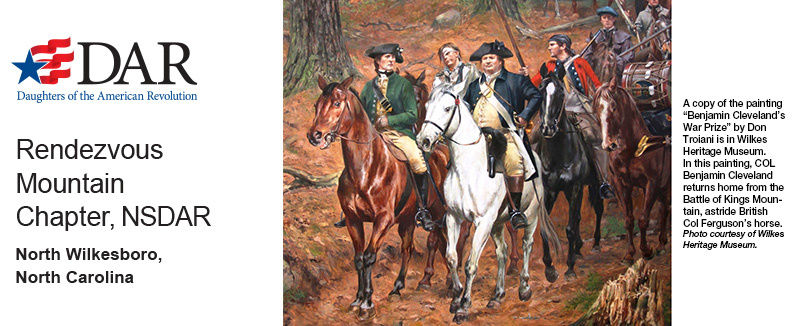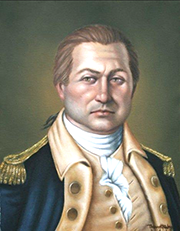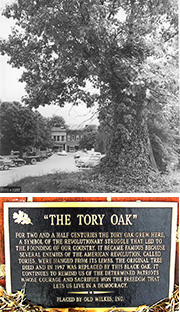
History of Our Name
As Britain imposed excessive taxation on the colonies, Benjamin Cleveland―who lived by the Yadkin River in North Carolina―was becoming more vocal in denouncing the tyranny. He suppressed the Tories through punitive legislation and by his authority as chairman of the safety committee. He scoured the countryside and captured several Loyalist outlaws, several of whom he executed. He earned the nickname “Terror of the Tories”, for his harsh treatment and hanging of the British sympathizers. Some of the hangings were carried out at the “Tory Oak” in Wilkesboro.

COL Benjamin Cleveland
With the onset of the American Revolution, Cleveland became a captain in the revolutionary militia and took part in the Cherokee expedition of 1776. The British had enlisted the Cherokee as allies to fight against frontier settlers and American patriots. Cleveland led his regiment and joined the campaign of General Rutherford to drive the Cherokee force back across the mountains.
By 1778, Cleveland was made colonel of the Wilkes County militia. He had been appointed a justice of the newly formed Wilkes County and had been twice elected to the legislature.
Colonel Cleveland was known to summon his men by blowing into a cow horn. In the fall of 1780, he summoned 350 men on what is now called Rendezvous Mountain in Wilkes County. The British left wing, under the direction of Major Patrick Ferguson, intended to march into North Carolina from the south. “Cleveland’s Bulldogs” marched south and joined forces with the Appalachian “Overmountain Men” on September 30, at Quaker Meadows in Morganton, North Carolina. They were destined to clash with Ferguson’s troops at the Battle of Kings Mountain on October 7. After fierce fighting at Kings Mountain, Ferguson was killed and the Loyalists and Redcoats surrendered. Subsequently, the British, under Lord Cornwallis, abandoned their invasion of North Carolina. The Battle at Kings Mountain was the turning point of the American Revolution in the south.
